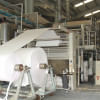Higher investments in non-cotton garments to fetch $46b by 2032: study

Bangladesh has the potential to raise non-cotton garment exports to up to $46 billion annually by 2032 if entrepreneurs invest $18 billion to expand their manufacturing capacity as the consumption of apparel made from artificial fabrics is rising rapidly, according to a new study.
Of the sum, $4.6 billion needs to be invested in fibre, filament and yarn manufacturing, $9.2 billion in fabrics production, and $4.2 billion in garment making.
Wazir Advisors Pvt Ltd, based in India's Jharkhand, carried out the study -- Beyond Cotton: A strategic blueprint for fibre diversification in Bangladesh's apparel industry -- on behalf of the Bangladesh Garment Manufacturers and Exporters Association (BGMEA).
While sharing the findings with reporters at the BGMEA office in Dhaka, Varun Vaid, business director of the firm, said the investment will also improve the capacity through the installation of additional 4.7 million spindles, 14,000 new knit machines, 31,000 new looms and 0.5 million sewing machines.
The fresh investments are expected to generate 1.76 million new jobs.
Globally, non-cotton fibre production has increased in the last five years whereas it has declined for cotton fibres.
In the manmade fibre group, polyester filament yarn has the largest share at 39 percent, followed by polyester staple fibre at 15 percent.
Non-cotton fibre accounts for 75 percent of garment manufacturing globally. In contrast, Bangladesh relies on cotton fibres to make 71 percent of the country's export-oriented products.
However, China's declining share in the non-cotton garment market indicates that Bangladesh, the second-largest apparel supplier in the world, has bright prospect in this arena as well.
Bangladesh's share in the non-cotton garment segment reached 5 percent in 2022 from nearly 1 percent a few years ago, the study said.
On the other hand, China's share fell to 36 percent from 56 percent. Similarly, India is also losing its market share.
Outerwear is among the largest exported items in the non-cotton category. Outwear shipment from Bangladesh stood at nearly $16 billion last year while it was $115 billion for China.
Speaking at the press conference, BGMEA President Faruque Hassan said the use of non-cotton fibre in garment production in Bangladesh has increased to 29 percent from 25 percent over the last three years as exporters are increasingly switching to the manmade fibre from cotton to receive better prices and expand their footprint.
"Bangladesh has more potential in non-cotton fibres as its demand is on the rise globally," Hassan said, adding that local entrepreneurs are ramping up their capacity with new investments to tap global potential.
Vaid said the global production of fibres was 116 million tonnes last year. This comprises 83 million tonnes of non-cotton fibres and 33 million tonnes of cotton fibres.
The BGMEA has targeted to raise its share in the global apparel market to 12 percent from the existing 7.87 percent on the back of items produced from artificial fibres.
"By increasing the volume of non-cotton products, we can expand to more markets and get better prices," Hassan said.
He said climate change also has a major impact on fashion as consumers prefer non-cotton garment items to cotton-made products.
"So, the import of non-cotton fibres has increased recently. However, diversification of fibres does not mean that the production base has shifted from cotton fibre."
Bangladesh imports non-cotton fibres worth $1.2 billion a year, according to Asif Ashraf, a director of the BGMEA.
He thinks local investments in this segment can serve garment exporters and create more opportunities.
"The share of non-cotton apparel exports from Bangladesh is still lower than cotton apparel shipments but it is increasing rapidly. This indicates buyers' inclination to source all types of apparel items from Bangladesh."
Cotton-made apparel exports are concentrated in four categories with a combined share of 63 percent. T-shirts account for 21 percent of the share, jerseys 12 percent and woven trousers 30 percent, the study added.


 For all latest news, follow The Daily Star's Google News channel.
For all latest news, follow The Daily Star's Google News channel. 








Comments